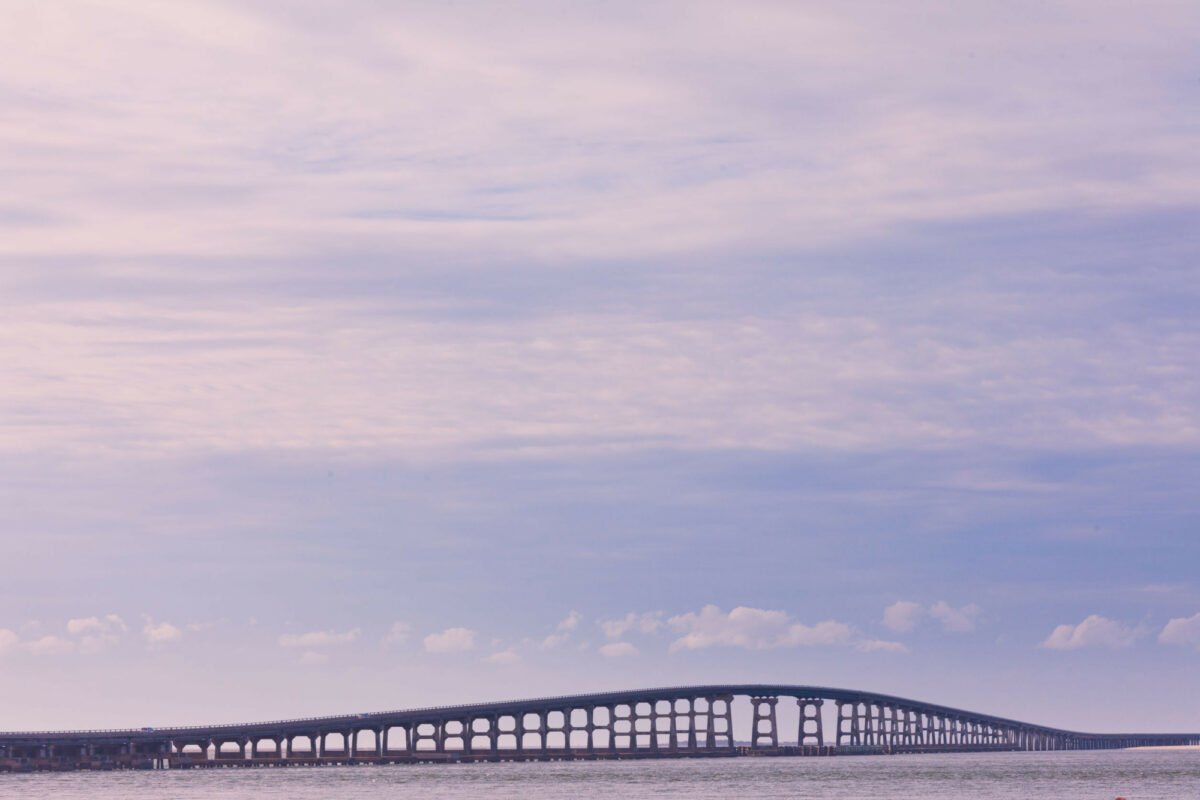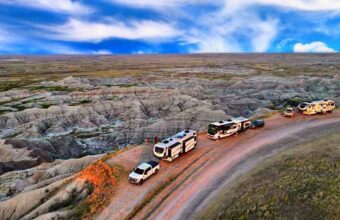North Carolina’s Outer Banks Road Trip
Explore the windswept Outer Banks
This drive rolls through federal and state parks on the windswept Outer Banks (OBX), a scrappy strand of barrier islands between the Atlantic Ocean and mainland North Carolina. Wild horses, a shifting sand dune, a mysterious lost colony and coastal watersports keep the mood untamed.
North Carolina’s Outer Banks road trip
Approx. distance: 425 miles
Duration: Three to four days
Suggested route: Norfolk, Corolla, Wright Brothers National Memorial, Jockey’s Ridge State Park, Fort Raleigh National Historic Site, Cape Hatteras National Seashore, Hatteras Island, Ocracoke Island, Norfolk

Herbert C Bonner Bridge connecting North Carolina's Outer Banks
Suggested driving route
It’s a two-hour drive from Norfolk International Airport in Virginia to Corolla, the northernmost community on the Outer Banks of North Carolina. Rental cottages are the most popular lodging option in Corolla and across the islands, with hotels, motels and campgrounds few and far between. Your best bet is to spend two nights in northern OBX and two nights further south.
From Corolla, follow Hwy 12 and US 158 thirty minutes south to the Wright Brothers National Memorial in Kill Devil Hills. Continue south four miles through the commercial sprawl to Jockey’s Ridge State Park. On the twenty-minute drive to Fort Raleigh National Historic Site, you’ll leave Hwy 12 to follow US 64 to Roanoke Island.
From Roanoke Island it’s a 15-minute drive back to Hwy 12 and the entrance to Cape Hatteras National Seashore, which stretches south across Bodie Island, Hatteras Island and Ocracoke Island. The islands are bordered by Pamlico Sound to the west and the Atlantic Ocean to the east. There are four campgrounds within the park. There is no bridge linking Hatteras Island with Ocracoke, but a free ferry runs daily between the two islands. It’s about sixty miles from the northern entrance of the national seashore to the ferry dock. Highway 12 through the park is also known as the Outer Banks National Scenic Byway.
Where to stop & what to see
Corolla
Wild horses roam the beaches and sand dunes north of Corolla, a coastal village at the northern terminus of Hwy 158. The horses are most likely the descendants of wild mustangs that escaped from Spanish shipwrecks more than 500 years ago. Small tours pack into open-air vehicles, which bounce over the sands in search of the horses. Kids may also enjoy the 222-stair climb up the spiral staircase to the top of the Currituck Beach Lighthouse. Kiteboarding, kayaking and parasailing are popular water sports on Currituck Sound, which separates the northern Outer Banks from the mainland.
Wright Brothers National Memorial
A 60ft-high granite memorial honours the world’s first airplane flight, which lifted from the sand flats here on December 17, 1903. Developed by brothers Wilbur and Orville Wright, the aircraft – piloted by Orville – stayed aloft for 12 history-changing seconds and traveled 120 feet. Visitors today can scramble onto a steel-and-bronze replica of the airplane and walk between the original lift-off and landing spots. Exhibits in the visitor centre spotlight the innovative brothers.
Jockey’s Ridge State Park
It may be the most basic attraction on the Outer Banks, but the sand dune at this 426-acre park is a perennial crowd pleaser. Because coastal winds are constantly changing its shape, Jockey’s Ridge is known as a “living” dune. The largest living dune on the east coast, it rises about 60 feet. Because of the persistent winds, the park is a great place for kite flying and hang-gliding. Hang-gliding lessons are offered by an on-site concessionaire. A climb to the top of the dune will likely be more strenuous than you expect, but your efforts will be rewarded by a bird’s-eye view of the Atlantic Ocean and Roanoke Sound. The sand here sparkles photogenically at sunset.
Fort Raleigh National Historic Site
To compete against Spanish trade dominance along the coast of the Americas, Queen Elizabeth authorised a series of reconnaissance and colonising voyages to the New World in the late 16th century. The 1587 expedition deposited a group of 117 English settlers on Roanoke Island. These men, women and children ultimately vanished, seemingly into thin air. The fate of the settlers, dubbed the Lost Colony, has never been determined. Explore the grounds and gardens in the late afternoon, then attend the Lost Colony outdoor symphonic production, which has dramatised the mystery since 1937. Another on-site memorial recognises the Freedmen’s Colony, a haven for newly freed slaves that was established here during the Civil War.
Cape Hatteras National Seashore: Bodie Island
This skinny national seashore starts at the junction of US 64 and Hwy 12 on Bodie Island and continues south across Hatteras Island and Ocracoke Island. Sunbathers and beachcombers have more than 70 miles of ocean shoreline to enjoy across the park. Building a beach bonfire is allowed, just fill out a permit and find an approved location. On Bodie Island, energetic families can tackle the steep climb to the top of Bodie Island Lighthouse. Chartered fishing boats depart from the Oregon Inlet marina for trips in the Atlantic Ocean and Pamlico Sound. The Oregon Inlet Campground, with 120 reservable spots, is open year-round.
Cape Hatteras National Seashore: Hatteras Island
Observation decks border the trails that ribbon past ponds and salt flats in the Pea Island National Wildlife Refuge, which sprawls across the northern tip of Hatteras Island. Further south, the villages of Waves and Avon are regional hotspots for windsurfing and kiteboarding. It’s a twelve-story climb to the top of the black-and-white-striped Cape Hatteras Lighthouse – the tallest brick lighthouse in North America. There are two seasonal park campgrounds on Hatteras Island. Rental cottages cluster in the larger coastal villages.
Cape Hatteras National Seashore: Ocracoke Island
Accessed by a free daily ferry, Ocracoke is made for low-stress vacationing. Stroll along the undeveloped beaches, build a beach bonfire, scan for wild ponies, wander nature trails, take a kayak tour and bicycle to Ocracoke Village. Lodging options include rental cottages, a handful of inns and motels and a year-round national seashore campground.






